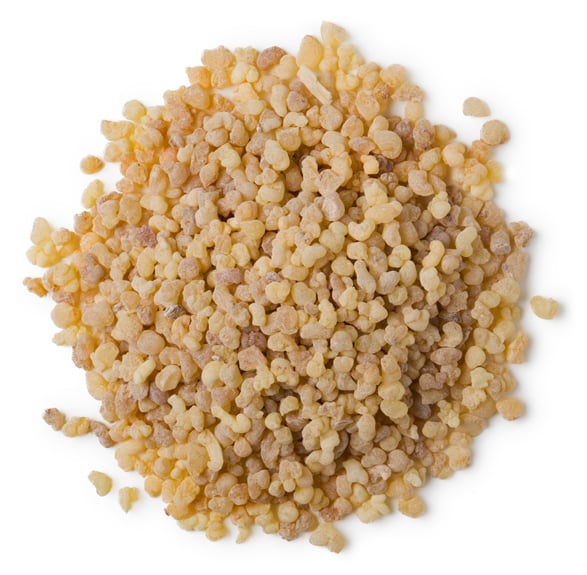
INGREDIENT
Olibanum Oil
Boswellia carterii
BENEFITS
Olibanum essential oil, also called frankincense, has a complex and penetrating woody scent that invites you to pause, breathe, and relax.
There is much to say about olibanum/frankincense, so if you want to know even more details than what’s below, please visit this complementary Frankincense page.
What does olibanum oil smell like?
As you close your eyes and inhale frankincense oil, you see yourself walking in a pine and eucalyptus forest, your steps taking you to a sun-bathed clearing. Here, a steamy spring welcomes you in its warm and surprisingly citrus-scented water. While you thought you couldn’t be more relaxed, a misty, peppery, incense smoke spreads around you, balancing and settling your mind once and for all.
Where do we source our olibanum oil?
The resin used for our oil and resinoid is mainly produced in Somaliland, an autonomous region in northern Somalia. This area is the home of more than half of the world’s olibanum and myrrh trees. Growing global demand and low prices can lead to over-tapping, which jeopardises the health of the olibanum trees. Sustainable harvesting practices and traceability are more important than ever to ensure the future of frankincense in the region.
Our suppliers are diligently working to enhance the transparency of the supply chain. Their efforts aim to ensure that farmers receive a fair price and that trees are harvested sustainably, ultimately guaranteeing the long-term viability of this precious resource. One of our main suppliers, based in Vermont, USA, was the first to obtain organic certification for their olibanum products.
Did you say blockchain?
Since 2020, we have also been working with an additional supplier for frankincense oil who are the first to use blockchain technology in Somaliland to provide full traceability from tree to oil. Blockchain allows radical transparency into where and how the frankincense is sourced. A new bespoke mobile app deployed to local field teams offers an incorruptible platform to document practices such as the origin and movement of resin, sustainable harvesting and ecosystem management, fair payments to harvesters, and community investment. This initiative is part of the antidote to the often opaque frankincense supply chain.
By supporting these sustainable and transparent practices, we ensure the long-term viability of frankincense, benefiting both the environment and the communities that depend on it.
